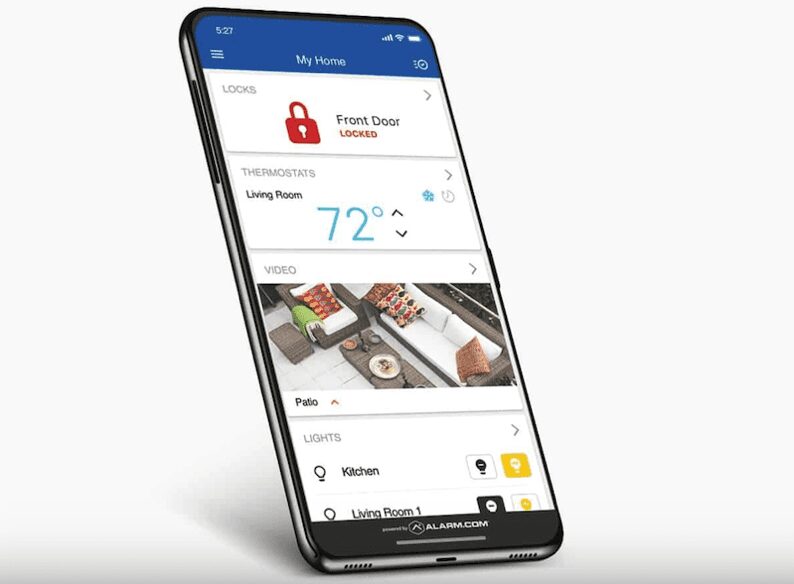Multifamily Living Tech Trends to Watch in 2022
By: Mike Branam

The past two years have monumentally shifted how technology is used in homes. We’ve seen a wave of innovative tech developments to support the new way of living as renter demands change and an older generation enters the residential rental market.
How will property managers keep up with the new demand, and how will the community respond to this adoption of tech? Here’s my take on the technology trends we can expect to see shaping the future of multifamily living in 2022 and beyond.
Three technology trends we will see in 2022:
1) Tech Innovation in Apartment Buildings
Remote working and flexible living have been massive influences in the advancement of tech in the industry. Tech cities have risen to accommodate this change in how we live, work and travel. Multifamily properties were developed to incorporate more functional areas for these types of tenants, such as co-working spaces and conference rooms.
In 2022, we will see further advancement in the adoption of technology in apartment buildings, specifically, more growth in the in-unit technology but also a bigger step toward the “smart community” as opposed to the “smart apartment.”
Investors, seeing the potential in multifamily homes, have begun buying and developing these accommodations to meet demand. But why is there such a demand for multifamily properties?
Baby Boomers are particularly attracted to smart tech enabled apartments as they offer convenience, safety and energy savings. Seniors, as much as anyone, want to keep their independence and live alone rather than in a care home. Tech such as cameras and safety alarms help keep them and their families reassured.
Care homes can be costly compared to an apartment. Smart enabled homes can further reduce costs by 12% on heating bills and 15% on cooling systems. Multifamily apartments often include smart tech already and many will offer built in amenities such as the building being wheelchair accessible, which otherwise they would have to pay to install.
2) Smart Home Tech Set to Power Asset Protection
Technology will continue to be used as an asset protection tool. For example, HVAC and water management solutions to help mitigate risk, or better yet, prevent issues from happening in the first place. Technology will allow what was a reactive maintenance model to become proactive, and even preventative.
Smart thermostats can save on cost, improve energy efficiency and sustainability, as well as improve guest satisfaction. PointCentral’s HVAC System Monitoring algorithmshowed HVAC maintenance technology has the potential to save an average of $250 per rental, by using algorithms to predict issues ahead of time. This can protect property managers against costly repairs and paying for maintenance costs when it’s not necessary.
Smart water sensors and water management systems are also central to asset protection, mitigating risk and further protecting the home asset against the staggeringly high cost of water damage events.
Integration of smart tech tools will be the key to keeping up with new market demands. Solutions such as HVAC technology and water management ensure protection of your assets and provide peace of mind that the essentials are being taken care of, while you attend to the growth of your business.
3) New Expectations Around Smart Tech as a Resident Amenity
Having gotten used to the convenience of smart home tech, we’re going to see increased demand from both residents, operators and asset owners to integrate with their preferred devices or platforms. Residents especially have grown accustomed to the added benefits of smart tech enabled rentals and many expect certain features as a basic amenity.
PointCentral’s recent Persona Research Study revealed renter appetite for technology, with more than one in three renters “wishing” their current or next property included several smart home devices, 45% desiring a smart door lock, 38% a video doorbell or peephole camera, and 36% a smart thermostat.
This study also indicated that proptech can increase rental value. With smart proptech homes being able to add a minimum rental premium of $20 a month. It also showed proptech increased desire to renew in over half (56%) of respondents, and in large metro markets renters expressed willingness to pay an average of $39 per month for these amenities.
Knowing the shift in how we work and live has led to many renters spending more time at home, multifamily property developers will tailor buildings to meet these needs, providing better amenities than the average apartment.
Conclusion
It’s clear that we’re only at the beginning of the smart home tech development in all kinds of rental accommodations. With the fastest growing rental sector, Baby Boomers, driving the market, 2022 is set to be an exciting year for tech innovation in the multifamily space.
